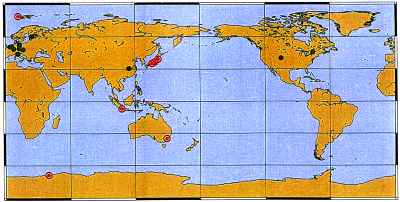International Earth Rotation Service (IERS)
Earth Rotation Division and the Mizusawa Astrogeodynamics Observatory were inaugurated in 1899 as one of the six stations of the International Latitude Service to monitor the Earth's variable rotation. Thereafter, it acted as a central bureau of the International Polar Motion Service from 1962 through 1987. The International Earth Rotation Service, established in 1988, has been realizing positioning accuracy from centimeters to millimeters using space techniques that brought about a dramatic achievements in geodynamics and related sciences. The current functions of NAO Mizusawa in IERS are the VLBI Analysis Center and the Eurasian VLBI Network Center. Bilateral and multilateral cooperation is being carried out with respect to measurements and technological development of VLBI and gravimetry.
Global Geodynamics Project
A global network of superconducting gravimeters (SG's) is producing scientifically highly significant data usable for the study of a variety of disciplines related to the Earth's gravity, tides, environment, and geodynamics, such as, seismic normal modes, the Slichter triplet, tidal gravity, ocean loading, core nutations, and core modes. The network was set up by the Global Geodynamics Project (GGP) in 1997. We continue observations with SG's at Syowa Station in Antarctica, and Australia. Further we are establishing a new north-polar station at Spitzbergen in Norway.

The GGP network stations.




